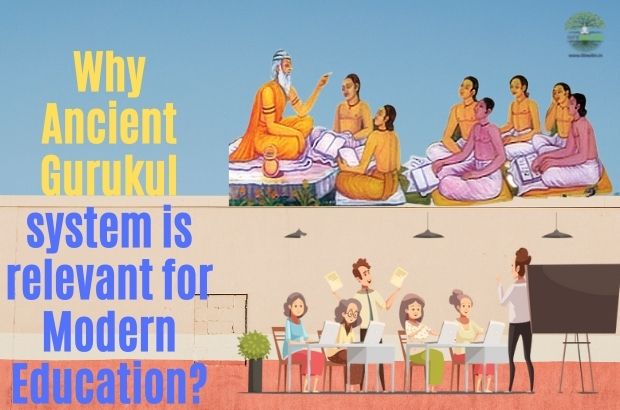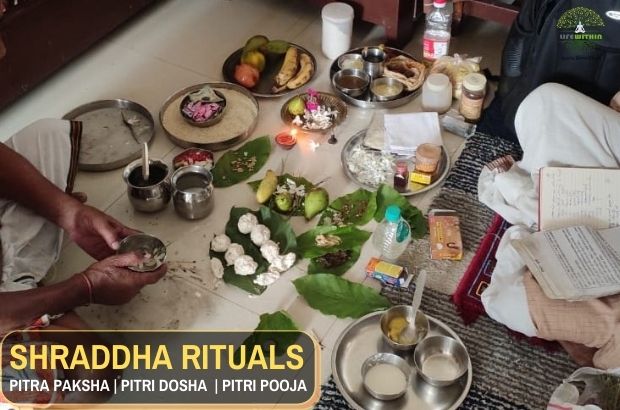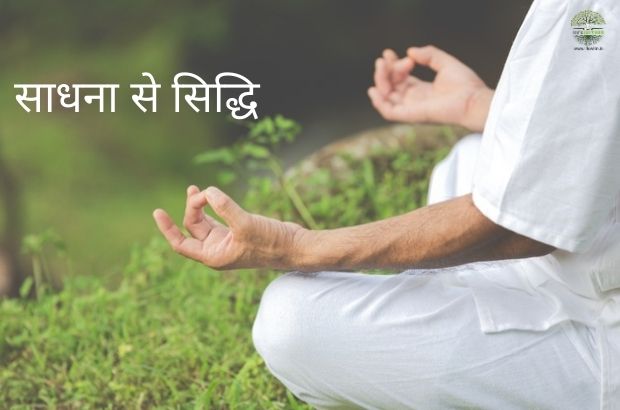Shardiya Navratri: Rituals of Navratri Puja | By Dr. Surendra Kapoor
Navratri is an ancient religious occasion observed by the Hindus. Since antiquity, this festival has remained significan...
- by Dr Surendra Kapoor
- Oct 07, 2021
- 2403 views
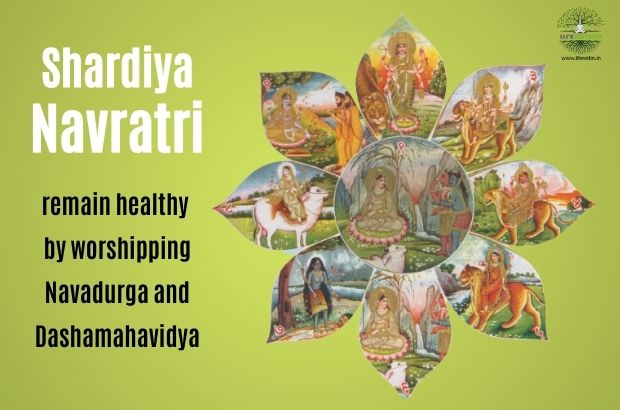
Remain healthy by worshipping Navadurga and Dashamahavidya
What is
Navratri?
Navratri is an ancient religious occasion
observed by the Hindus. Since antiquity, this festival has remained significant
for the masses. The Navratri vrata is vividly mentioned in the
‘Shreemad-devi-bhaagwat’. In it, Maharshi Vyas has revealed the rituals of this
vrata to Janmejaya. The great saint stated that in both Spring and Autumn
seasons, most of the people fall prey to deadly diseases and many lose their
lives. Both these seasons are hence named as ‘Yama-danshtra’. Therefore, people
seek blessings from goddess Durga who is known to be the destroyer of all
sufferings, a protector from all negatives and a healer who provides peace,
happiness and good health. In Mahanirvan Tantra, it is stated that everyone
should observe the Navratri vrata to be blessed with a peaceful and blissful
family life. The virtues of all the other vratas in the year can be attained
only by observing the Navratri vrata devotedly.
The four Navratris
Navratri arrives four times a year- 1.
Chaitra 2. Ashwin 3. Aashadh 4. Maagh. The Navratri is of two types- one that
happens in Shayan Chaitra and the other that happens in Bodhan Ashwin. In all
the four navratris, the worship of Devi Durga holds importance.
Ashwin or
Shardiya Navratri
The nine day long festivity and worship of
Goddess Durga in her nine forms during the winter season is known as Shardiya
Navratri. It is during this season when nature emerges with the creative,
exuberant and spirited form of the divinity; full of life and spreading joyous
colours all around. It is one of the best periods to access the powerful
feminine divine energy in order to make positive transformations in life. It is
also the most suitable time to purify one’s thoughts and actions through right
deliberation and to infuse the spirit of beauty, joy and enthusiasm in life.
This year Shardiya Navratri begins from
Thursday 7th October 2021 and ends on Friday, 15th October 2021. Navratri is of
8 days this year as Tritiya and Chaturthi Tithi has fallen on the same day ie;
on Saturday as per the Hindu Calender year. Vijay Dashami or Dasehera will be
celebrated on Friday, the 15th October 2021.
A festival
for all and sundry
In Bhavishyottar, the significance of this
vrata has been described. It is said that all the people, irrespective of
caste, class or creed have the right to observe this vrata. It is believed that
people who along with the daily pooja rituals, also observe Navratri vrata in
the winter season are showered with the blessings of Maha-maya. All the hurdles
of life are removed and their life is filled with joy and splendor.
Nine forms of
energy
Navratri embodies nine energetic powers; each
shakti is venerated on each tithi. Devi Durga manifested several forms for the
welfare of her devotees. The nine forms are as follows-
1. Shail
Putri
2. Brahma
Charini
3. Chandra
Ghanta
4.
Kushmanda
5. Skanda Mata
6. Katyayani
7. Kaal
Ratri
8. Maha
Gauri
9. Siddhi Dhatri
1. Shailputri- The king of the mountains, ‘Giriraj Himalaya’ had
observed a strict penance and was blessed with a daughter who was none other
than goddess Durga herself. Pleased by
Himalaya’s devotion, Sati had incarnated as Parvati in his house. Being the
daughter of the mountain, the goddess came to be known as Shail putri.
Sailputrid katha is described in Koorma Puran.
2. Brahma Charini- The goddess who is liberated and enables one
to attain the Para-brahma is the one who is known as Brahma Charini.
3. Chandra Ghanta- The goddess who wears a crescent moon on her
forehead and provides serenity, knowledge and bliss is the goddess
Chandraghanta. This description is as per Rahasya Arnav.
4. Kushmanda- The spiritual form of the goddess who destroys
all evils is known by the name of Kushmanda.
5. Skanda
Mata- Sanat kumar is also known by the
name of Skanda and being his mother, the goddess is known by this name. this is
as per Chhandgyopnashad.
6. Katyayani- Once when the gods faced severe trouble,
Rishi Katyayan began a strict spiritual practice (tapa) for the blessings of
Goddess Durga. The goddess was pleased with his devotion and was born as his
daughter. Thus, the goddess came to be known as Katyayani.
7. Kaal
Ratri- Being the vanquisher of kaal,
the devi is known by this name. She embodies the destructive force against
darkness and ignorance.
8. Maha
Gauri- In ‘Kali puran’, it is stated
that Parvati had a dark complexion and Lord Shiva used to tease her due to her
dark looks. One day, she got furious and took the most fairest and radiant
forms and came to be known as Maha Gauri. This is as per Kali Puran.
9. Siddhida- The goddess whose blessings liberates a soul of all
earthly ties is known as Siddhida. She is also known as Siddha mata and Siddhi
mata.
These nine Durga forms are worshipped in
Navratri to attain siddhi or complete accomplishment. By worshipping these nine
forms in sequence, one attains all the four results- dharma, artha, kama and
moksha.
Rituals of Navratri Puja
An idol of Devi Durga should be installed on
a bed of mud covered by silk cloth. Instead of an idol, one can also place
Shree Durga yantra or a picture of Shree Durga. A mangal kalash or pot filled
with holy water with a coin inside it should then be installed. Fresh mango
leaves and a coconut wrapped in red cloth should be placed on top of it. All
the offerings as per ritual should be made and the devotee should invoke Ma
Durga with all dedication.
|
Tithi |
Offerings |
Result |
|
Pratipada |
Cow ghee |
Good health |
|
Dwitiya |
Sugar |
Long life |
|
Tritiya |
Milk |
Freedom from miseries |
|
Chaturthi |
Maalpuwa |
Destruction of obstacles |
|
Panchami |
Banana |
Development of intellect |
|
Shashthi |
Honey |
A beautiful personality |
|
Saptami |
Jaggery |
Freedom from grief |
|
Asthami |
Coconut |
Freedom from misery |
|
Navami |
Flattened rice |
Happiness |
|
Dashami |
Black sesame |
Fearlessness from death |
|
Ekadashi |
Curd |
Appeasing the goddess |
|
Dwadashi |
Flattened rice |
Appeasing the goddess |
|
Trayodashi |
Chickpea |
Progeny |
|
Chaturdashi |
Sattu |
Offering to Lord Shiva |
|
Purnima |
Kheer |
Liberation of ancestors (pitar) |
|
Amavasya |
Kheer |
Liberation of Pitar |
A vrata observer should eat a meal cooked by
a family member once in a day and lead a life of celibacy during the Navratri
festival. Prayers should be offered thrice in a day. The devotee should chant
the Saptashathi-stotra as per the rules defined in the scriptures. However, in
today’s fast-paced world, almost everyone is hard pressed for time and find it
difficult to observe strict and long vrata rituals. Hence, people who wish to
offer prayers to Ma Durga but cannot participate in the nine day long worship
can perform a one day special Navratri puja. On the particular day, along with
recitation of Durga Saptashati, the related Dashamahavidya should be venerated
by them to gain optimum results of the puja.
Given below are the details of Dashamahavidya
and Navadurga forms to be venerated by natives of different moon signs (rashis)
|
Moon sign (RASHI) |
DASHAMAHAVIDYA |
NAVDURGA |
VRATA |
|
Mesh |
Tara |
Shailputri |
Navami |
|
Brisha |
Shodashi |
Brahmacharini |
Navami |
|
Mithun |
Bhuvaneshwari |
Chandraghanta |
Ashthami |
|
Karkat |
Kamala |
Siddhidatri |
Navami |
|
Simha |
Baglamukhi |
Kaalratri |
Asthami |
|
Kanya |
Bhuvaneshewari |
Chandraghanta |
Navami |
|
Tula |
Shodashi |
Brahmacharini |
Ashthami |
|
Vrischik |
Tara |
Shailputri |
Ashthami |
|
Dhanu |
Kamala |
Siddhidatri |
Ashthami |
|
Makar |
Kali |
Siddhidatri |
Ashthami |
|
Kumbha |
Kali |
Siddhidatri |
Navami |
|
Meen |
Kamala |
Siddhidatri |
Navami |
Kumari Puja-
the soul of Navratri
Kumari puja is the life of Navratri; without
it all spiritual practices (japa and tapa) remain futile. From Pratipada to
Navami, little girls of different ages are worshipped in a sense of worshipping
the Divine mother, Durga. The kumaris are worshipped and offered flowers,
clothes and jewellery. After the pooja rituals, a variety of food is served to
them in a pure manner. After food, cardamom, betel nut and betel leaf are
donated to them. The two year old kumari is worshipped as Kumari, three year
old as Tri-murti, four year old as Kalyani, five year old as Rohini, six year
old as Kaalika, seven year old as Chandika, eight year old as Shambhavi, nine
year old as Durga and 10 year old is worshipped as Subhadra.
While performing Kumari pooja, along with
Lord Ganesh and Batuk (a young boy) 7, 5, 3 or 1 kumari must be worshipped. A
little boy should be chosen for the worship of Lord Ganesha. The boys should be
made to sit on an aasan (mat) and should be worshipped first in the sense of
offering prayers to Lord Ganesha and Batuk. After this ritual, is the time to
worship the Kumaris.
The different
offerings for Ma Durga
The following chart based on ‘Shreemada-devi-bhaagwat’
gives us a view of the offerings to be made to goddess Durga as per tithi and
day of Navratri.
Offerings to
the goddess (Devi naivedya) on the different days
|
Day |
Offerings |
|
|
Kheer |
|
Monday |
Milk |
|
Tuesday |
Banana |
|
Wednesday |
Butter |
|
Thursday |
Molasses |
|
Friday |
Sugar |
|
Saturday |
Cow ghee |
Offerings to
the goddess (Devi Naivedya) based on Tithi
|
Tithi |
Offerings |
Result |
|
Pratipada |
Cow ghee |
Good health |
|
Dwitiya |
Sugar |
Long life |
|
Tritiya |
Milk |
Freedom from miseries |
|
Chaturthi |
Maalpuwa |
Destruction of obstacles |
|
Panchami |
Banana |
Development of intellect |
|
Shashthi |
Honey |
A beautiful personality |
|
Saptami |
Jaggery |
Freedom from grief |
|
Asthami |
Coconut |
Freedom from misery |
|
Navami |
Flattened rice |
Happiness |
|
Dashami |
Black sesame |
Fearlessness from death |
|
Ekadashi |
Curd |
Appeasing the goddess |
|
Dwadashi |
Flattened rice |
Appeasing the goddess |
|
Trayodashi |
Chickpea |
Progeny |
|
Chaturdashi |
Sattu |
Offering to Lord Shiva |
|
Purnima |
Kheer |
Liberation of ancestors (pitar) |
|
Amavasya |
Kheer |
Liberation of Pitar |
We all need
power and positive energy
Navratri is the worship of Shakti- the
imperishable, glorious and the most supreme motherhood aspect of the divine
power. By invoking Ma Durga, we are bestowed with infinite energy, wealth,
success, prosperity, health and auspiciousness. We all seek power and
positivity in life and Shardiya Navratri is an excellent opportunity to be
showered upon with absolute power and ultimate positivity.
Read on to know about some special ways and
holy mantras which promise you a life filled with peace, prosperity, wealth and
happiness.
1. To get rid of all difficulties in life- If you face difficulties and hurdles in
whatever you try to do, then practice these rituals to overcome all problems:
Bathe early on Pratipada of Navratri. After
you are ready, spread a red cloth on a chowki (small wooden platform) and place
a copper plate on it. Make a swastika sign on the plate and then install Ganesh
yantra( made of paper or copper) on it. Thereafter, place a betel nut on a coin
and tie it with a sacred thread. Make five such betel nuts tied with sacred
threads and place them in a row next to the yantra. Light a lamp, incense
sticks and offer red flowers. Then chant the mantra:
“Om Gang Ganapataye Namah”
After reciting the mantra feed a Brahmin or
an unmarried girl and give dakshina and clothes. Then place the yantra in your
pooja room or office room. Offer the betel nuts at any Ganesh temple
nearby.
2. To get
rid of financial problems and gain riches- Following these simple rituals help you to gain wealth
and comforts:
Wake
up early on the day of Navratri and place a yellow cloth on a chowki (small
wooden platform). Place a copper plate on it.
Write ‘shree’ on the plate using saffron. Offer flowers and then install
dhanada yantra (made of paper or copper) on the plate. Then smear 11 shells
(koudi) with saffron and place them on the plate. After this, fill a
dakshinavarti conchshell with saffron water and worship the yantra and the
shells. Chant the following mantra;
“Dugre Smrita
Harsi Bhitimasheshjanto
Swasthaye
Smrita Mativativ Shubhang Dadasi
Daridraya
Dukh Bhayaharini Katwadanya Sarvopakarkarnaya Sadadrarchita”
Repeat the whole process on all the nine days
of Navratri. On Dashami, fold all the puja items in the yellow cloth and place
it in your locker or iron safe. By following this ritual, Ma Lakshmi’s
blessings will be showered upon you and your economical position will surely be
strengthened.
JAI MAA
Dr. Surendra Kappor |
Renowned Vedic Astrologer & Vastu Expert


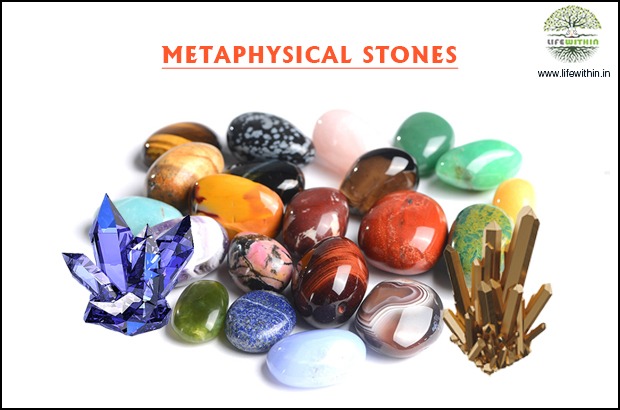

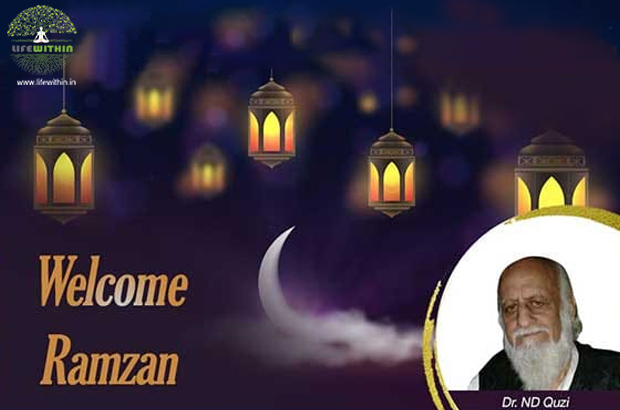

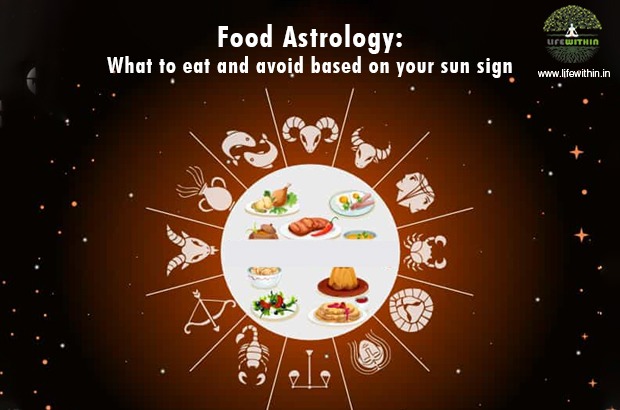
.jpg)

